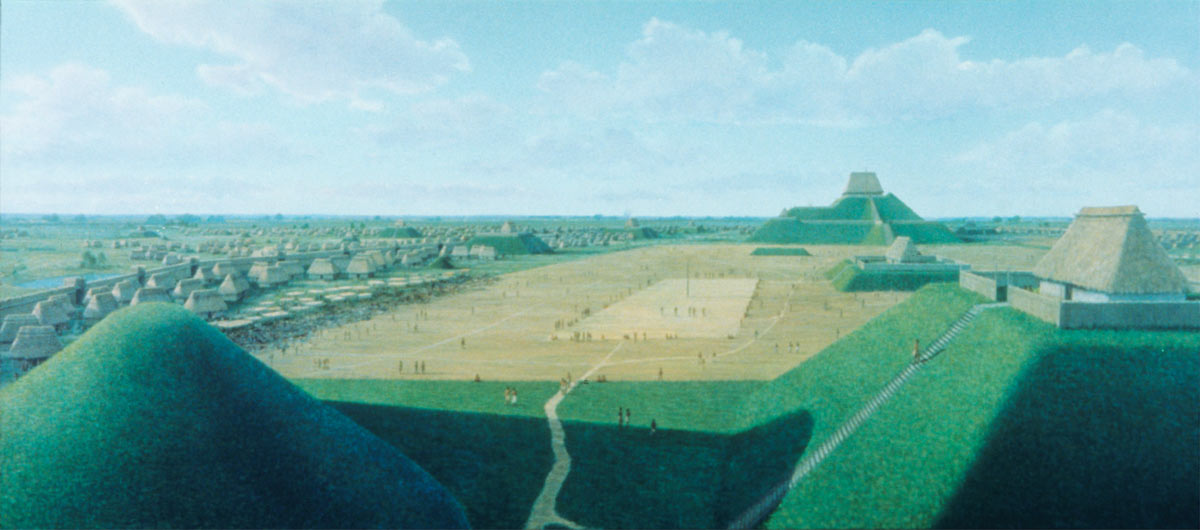Urgent Need to Protect United States' Historic Environment


Monty Dobson, Inaugural Scholar at the School of Public Service and Global Citizenship, Central Michigan University, writes the Monty's World blogand is producing the documentary America: From the Ground Up!. He contributed this article to LiveScience’s Expert Voices: Op-Ed & Insights.
Human beings have occupied North America for most of the last 12,000 years and we have left our mark on the place. We have dug, scraped, built, destroyed and rebuilt monuments and settlements both great and small from one end of the continent to the other. We know that the impact of our collective past has forever altered the environment. Today, the impact of human activity and development on the “green environment” is a common topic when discussing development projects.
For high-profile initiatives like the Keystone XL pipeline truth is sometimes lost in a mass of ink and words. But where is the discussion about the impact of development on the archaeological record or the historic environment?
This isn't a call to oppose or support development, rather a call for the historic environment to have a voice as we engage in a national dialogue about major development projects like the Keystone XL pipeline. The historical environment is unique in that once we dig a hole, drill a well, or build a road, some part of it is destroyed forever. Given the irrevocable change wrought by development projects on the historical environment, is it too much to ask that we give some thought to the impact modern activity on the historical and archaeological record? [Cahokia: North America's First City]
Recently, while driving across country, I listened to a National Public Radio current-events radio show. The topic of the day was the proposed Keystone XL oil sands pipeline intended to move oil from Canada to the Gulf of Mexico. The pipeline cuts right through the heart of the United States and there are very serious concerns voiced about the impact of the project on the environment, safety and economy. The show guests, including an oil company executive, an economist, a reporter and an environmentalist, did a very good job of discussing those issues as they related to the pipeline. However, during the hour-long broadcast not one word was uttered by the show's guests about the impact of the pipeline on the archaeological and historical areas along the route. I am sure there was no intent on the part of the show's producers to omit a discussion of the archaeology, buildings, landscapes and historic sites, but amid all the sound and fury: not one word about the historic environment. We have an obligation to protect our historic environment for future generations. And the need is urgent. For example, according to The National Trust for Historic Preservation the Civil War Battlefield at Gettysburg is beset on all sides by “strip shopping malls and fast food franchises, and privately-held land at the park's boundary [that pose] a continuing threat to its historic environment. Development plans have included a commercial campground within the park and a shopping mall, visible on its periphery from various vantage points.” Worryingly there are periodic efforts to develop a casino nearby.
But it isn't just the pretty and quaint buildings and iconic public spaces like Gettysburg that deserve protection. Whatever the motive for allowing their decay, many of the structures and spaces from America's industrial era are being destroyed. These spaces were, in their day, built over existing places of historic importance. Indeed, in the case of that iconic city Industrial Revolution Detroit, the rush to develop in the early 20th century led to the eradication of the city's historic environment. In the rush to build the modern, there were few if any voices urging protection of Detroit's historic spaces. I have to wonder what modern Detroiters would give to have those spaces back? In the United States we have a patchwork of federal, state and local laws governing how historical and archaeologically significant places are handled, but there is nothing like a coherent set of rules, or indeed a national consensus on how to protect those places. It is true that major development projects that receive federal money are required to do archaeological assessments. Native American sites and graves are covered by Native American Graves Protection and Repatriation Act regulations. But we still must have a debate about the wisdom of disturbing sites like these. And we need to start treating Native groups as partners in the process.
Thousands of years of history Towards this, I would suggest that the “historic environment” in America contains all material remains that our ancestors have left behind in the landscapes of America's cities, towns, rural and natural landscapes. It covers the whole spectrum of human activity, from the material culture of the First Nations to the largest modern towns to the very smallest sites, such as New England barns, Native American burial sites, and flint tool locations. Human activity in America reaches back thousands of years, and through the ages the landscape of rural America, as well as its cities towns and villages, have been altered by it. This is our historic environment. Beyond discussions of economics or clean air and water, we owe it to our children to leave them a world worth living in. We need to have a national dialogue about the best way to balance development and preserving our historic environment. But to do that, the historic environment needs a voice at the table alongside the economists and the greens.
Get the world’s most fascinating discoveries delivered straight to your inbox.
The views expressed are those of the author and do not necessarily reflect the views of the publisher.


